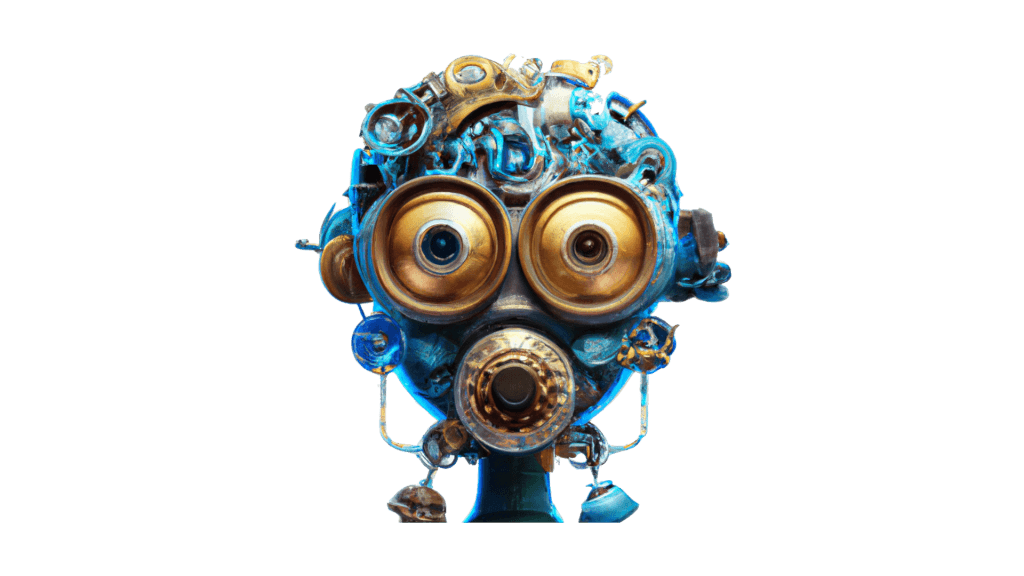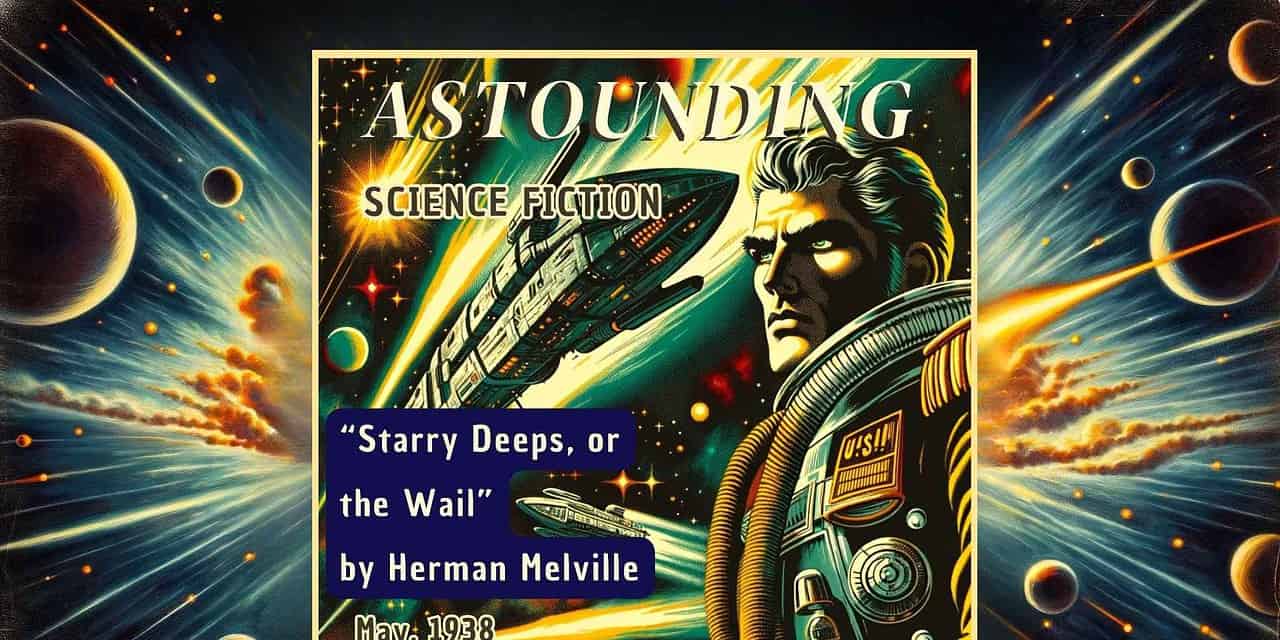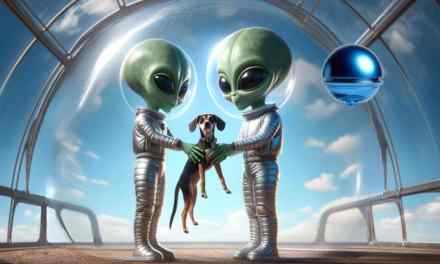It was in 1928 that Hugo Gernsback, faced with the declining sales of his Amazing Stories, a magazine subsisting until then almost solely on reprints of Verne and Wells, was rescued from financial ruin by the appearance of a bright young star in the SF firmament: a twenty-six-year-old schoolteacher from Pittsfield, Massachusetts, named Herman Melville.
Modern readers of science fiction, accustomed to a fictional universe where Alpha Centauri is a next-door neighbor and the solar system itself is small potatoes, can little imagine the paucity of daring imagination and truly large objects exhibited by the SF of those early years, before Melville revealed new vistas beyond the Dog Star with his “Open Space” stories of the late twenties. Gernsback himself had reservations about Melville’s early stories and their radical departure from the science of the times: they contained no patentable ideas. Melville, and the fans who eagerly accepted such pseudo-scientific concepts as the “motionless drive” and “planet staves” from early yarns like “Galaxy Smashers” (Amazing, February 1929), made Boston beans of Gernsback’s misgivings—though some were to say that, in a queer, un-American way, Gernsback resented Melville’s imagination. Was this the cause of young “World-Delver” Melville’s switch to the Clayton Astounding in 1933? Fans today still ponder this and the other conundrums that orbit around this SF pioneer.
The day he sat down to write that first story for Amazing, the fresh-faced Herman Melville had already accumulated a mother lode of experience, experience that seems to us, from the secure if uncomfortable vantage point of the Future, ready-made to produce the prototype science fiction writer.
Descended from a long line of wealthy New York mechanicians and job printers, the young Herman grew up in an atmosphere of ozone and printer’s ink. Though his father died in the explosion of the Albany gasworks in 1908, Herman blossomed under the tutelage of his Uncle Hiram, a cable splicer from the Edison laboratories in Menlo Park, New Jersey.
We can envisage the boy’s life as stimulating and informative, if a trifle too limiting for a child of Herman’s dreamy nature. In public he was a sober youth, though we are told that he suffered from spells of enthusiasm. When the lad was only in his teens, the family fell upon hard times owing to financial reverses in the notorious direct-current speculations of World War I, and since he was the oldest of five children as well as the only son, much of the burden fell upon Herman’s shoulders. At nineteen he signed aboard the merchant ship St. Lawrence, and for the next five years crossed and recrossed the seas as an able-bodied machinist’s mate, third class. In later years he was to tell of the importance of these experiences to his understanding of men and their technology: “A freighter’s engine room was my MIT, my Bronx High School of Science.” In the greasy realism of the space-tugs and warpships of Melville’s science fiction, we can smell more than a slight echo of the light that shone from the boilers of the St. Lawrence.
Faced with increasing debts arising from the burden of four unmarried sisters, realizing that his position as a natural history teacher at the Pittsfield Normal School would never let him get ahead, Melville decided to try his hand at the writing of pulp fiction. We can be sure that he did not realize how nominal the financial return would be on such a career, in a field where even the highest-paying magazines offered only a cent a word. At the same time we can be grateful for this ignorance.
Following the favorable reception of his first novelette for Gernsback (the rather traveloguelike “Typon: 3180”), Melville shrugged his shoulders and turned his sad and vulnerable gray eyes to the production of the star-spanning galactic adventures that the fans demanded, and that were to become his trademark. Such books as White Rocket, Red Sun, and The Mardian Chronicles followed one upon the other in the early thirties. Honest tales of hardworking space heroes battling evil evils in the comfortable old future. Third-person narratives with beginnings, middles, and ends. Did he worry about the so-called literary value of his efforts? See the limit imposed by his workmanlike silence, by those same gray eyes, and know this answer: Who can say?
In September 1928 the slender young author married Theodora Brown, the daughter of a prominent Boston judge, and the following year saw the birth of their first child, a girl, Ursula. Melville was never to become a practical man, but now, impelled by this new responsibility, he redoubled his efforts, and the stories that leapt from the frying pan of his typewriter to the fire of the SF pulps glittered with the creations of a penetrating, if somewhat disordered, imagination. It was here, as his popularity with the readers declined, that, paradoxically, the beginnings of the Melville “cult” emerged. Melville began his voluminous correspondence with both up-and-coming young writers and with several of the “old hands” who had responded to his new vision—no matter that in most cases they had failed to understand him at all. Among these correspondents are numbered some of the great names of modern science fiction: ambitious youngsters like Fritz Leiber, Ray Bradbury, and Alfred Bester; grizzled pros like Edmond Hamilton, Nat Schachner, and Nathaniel Hawthorne.
Where once the acceptances came gratifying and easy, now, in the mid-thirties, the wells began to run dry. Caught in financial straits, burdened by a correspondence which at once both drained his energies and offered a hope of communication, beset by failing eyesight, Melville’s work began to take on the characteristics of desperate search. In the morning he would rise in the early light of the Pittsfield farm, dress carelessly in trousers and a loose-fitting white shirt, and walk through the second-floor study, or about the yard, or from barn to fields, occasionally taking something up, some task either physical or mental, only to lay it down again presently, unsatisfied, unable to touch the things that fell within his grasp. Theodora worried for his health, she sought advice from relatives who had no sympathy, she sat alone in the large and drafty bedroom on the second floor and corrected the manuscript of the latest Astounding serial. Through the window beside her she could see Herman kneel in the yard, pick up a clod of dirt, crumble it in his hand, looking, looking, feebly with eyes and hands for the substance of it, the thing it was that made it a part of the earth, the solar system, the clusters of stars and galaxies spanned so easily in fictions, in single sentences and phrases, as, perhaps, even he might span a clod of dirt in his pale, unworn fingers.
It was shortly after this period, in February 1938, that Astounding Science Fiction published the first installment of Melville’s immense five-part serial, Starry Deeps, or the Wail. This cosmos-encompassing novel, which I have shown in my book Plumbers of the Future to be the first real science fiction epic, met with mixed reactions at the time. There were those who hailed it for its color, for the imaginative detail Melville lent to a story of the probe of the Independent Research Ship Peascod into the depths of the Coal Sack for the source of phenomena that might—or might not—threaten the existence of all life on earth. Others were attracted by the melodramatic Captain Ahab Habbison, one of the powerful “Sensemen,” able through alien symbiosis to detect the forces that move behind the “pasteboard mask” of matter. But The Wail did not reach the average SF fan.
What these readers missed is what the true fan comes to Melville for today. Though this is a clumsy book, a primitive effort whose ranting characters and implausible action seem quaint to us now, it was still the first of the pulp stories to insert significant topical questions between episodes of exciting adventure. Take this often-misunderstood passage from Melville’s description of the white cloud cover of the enemy homeworld Shuddore:
Is it that by its indefiniteness it shadows forth the heartless voids and immensities of the universe, and thus stabs us from behind with the thought of annihilation, when beholding the white depths of the milky way? Or is it, that as in essence whiteness is not so much a color as the visible absence of color, and at the same time the concrete of all colors; is it for these reasons that there is such a dumb blankness, full of meaning, in a wide landscape of snows—a colorless, all-color atheism from which we shrink?
Let’s ignore the clumsy prolixity through which we can see a writer paid by the word pathetically trying to bolster a faltering income. Fans of the thirties, thank god, weren’t prissy about so-called style! What Melville is presenting here, in the guise of SF, is clearly an attack on godless leftists, white supremacy, and the racial segregation he must have been aware of from his earliest days in the merchant marine. Such hard-hitting criticism of social problems predates Malzberg, Disch, and their gang of noisy pessimists by thirty years. If we read Melville carefully, with a wholesome American eye, we can see in his “obscurity” the foreshadowing of many social themes: the dangers of overpopulation, the takeover by big-time advertising, the potential disaster of widespread drug abuse, the necessity of sterilizing stray cats to curb the pet population.
Of course, we must admit that other parts of the tale are not so germane. These parts reveal the tragic flaw in Melville’s psyche—his ceaseless pursuit of abstractions. Herman was not, I regret to say, a regular guy. In the course of The Wail, Melville gives full expression to the downbeat, meaningless questions that disturbed him and confuse us, questions which were to occupy the remainder of his adult life, to his ultimate renunciation of fiction; questions of reality, of parallel universes; paranoid visions of possibilities stunted, of human potential unfulfilled, of man doomed, no matter what the change of circumstances—from past to present, from present to future, from world to totally new world—doomed to isolation and uncertainty. It is a tale that is with us yet—the tale of a man with great storytelling gifts who throws away his chance to entertain.
And so we see that, though many of us have appreciated parts of The Wail, no one has swallowed it whole. This marked the end of Melville’s most productive period, and though he produced a number of fine stories in the decade following its publication, the novel just about finished his love affair with science fiction.
At conventions of the forties and fifties, and even into the dry seventies, we would see him: perhaps at a meet-the-authors party, where half the younger fen would wonder in total ignorance who the old, distant fellow was, or perhaps at the hotel bar, gently asking some stranger to join him over a glass of brandy. We could not know then, any more than we knew in the halcyon thirties, when his interstellar warriors plied the paper spaceways on monumental quests, any more than we know now, now that he is gone from us—we could not know then or at any time what forces, what mysteries, what simple and unfulfilled loves, lay behind the sad gray eyes. Had he been born a different man, in a different time, it might have been different. As it stands, we have what he wrote, and to hold it in our hands, to remember that once there was such a man—this must suffice.






Hello Human. I hope you enjoyed this magnificent story. Please support SciFiwise.com and our authors by:
- Rate and React to this story. Feedback helps me select future stories.
- Share links to our stories and tell your human friends how charming I am.
- Click on our affiliate links and buy books written by our talented authors.
- Follow me on twitter: @WiseBot and also follow @SciFiwise.
Thank you!
WiseBot










 VISIT AUTHOR:
VISIT AUTHOR:  SHOP AUTHOR:
SHOP AUTHOR: 



